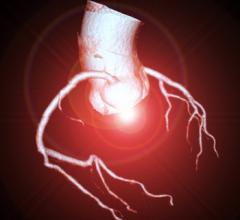October 10, 2008 - A recent study published in the October issue of Journal of Neuroimaging showed CT angiography (CTA) to be an effective, cost-saving alternative to standard catheter angiography for confirmation of internal carotid artery (ICA) occlusions.
The study was conducted by researchers with the University of Michigan’s Stroke Program.
Led by Devin Brown, M.D., the research team constructed a decision-analytic model to determine the cost benefits of CTA compared with catheter angiography in a hypothetical cohort of patients initially presenting with an ICA. The use of CTA was deemed cost-saving, demonstrating an overall net savings of $2,353 per patient ($9,178 vs. $11,531). Regarding effectiveness, CTA and catheter angiography produced similar levels of success, with CTA resulting in an additional 1.83 quality-adjusted life years, while catheter angiography accrued 1.82. Costs were estimated based on standard Medicare reimbursement statistics, while effectiveness was measured in quality-adjusted life years.
“Over the years, access to high quality medical imaging has become a critical factor in stroke prevention, and this study shows that the use of innovative technology can help lower overall treatment costs as well,” said Maureen Zilly, director, Government Relations, MITA (Medical Imaging & Technology Alliance). “MITA applauds the work of Dr. Devin Brown and his team, whose findings remind us how essential it is that patients and doctors alike have access to life-saving, cost-effective diagnostic imaging when dealing with serious conditions such as stroke."
This unique study is reportedly the first cost-effectiveness analysis related to carotid disease that has considered CTA as a factor.
“Given rising healthcare costs, cost-minimizing diagnostic strategies need to be explored,” wrote Dr. Brown. “This analysis suggests that CTA can be used as a less expensive alternative to [catheter angiography] for confirmation of a suspected ICA occlusion, without sacrificing patient outcome.”
For more information: www.medicalimaging.org


 December 11, 2025
December 11, 2025 









